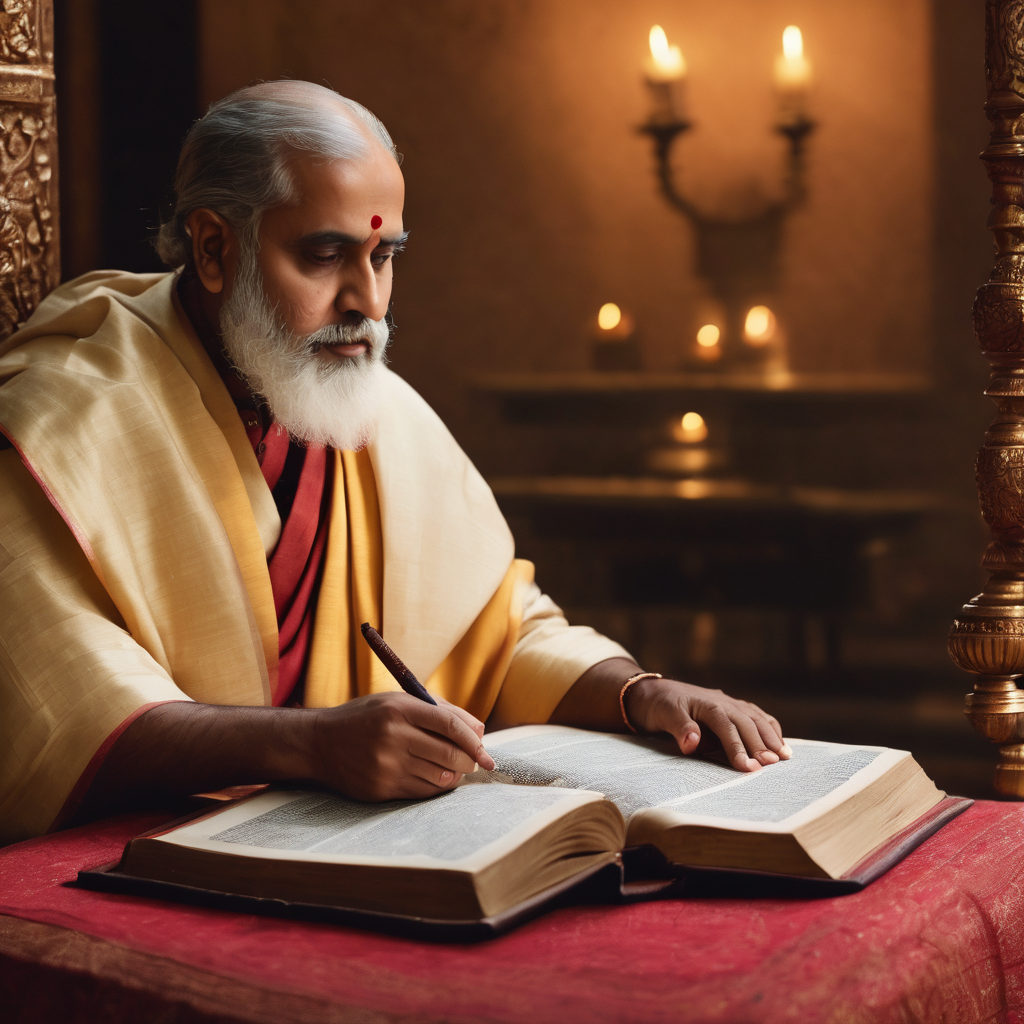Poets, authors, and storytellers have used Diwali as an inspiration to create poems, stories, and books.Literature has described in a very beautiful way what Diwali is, why it has been celebrated for thousands of years, its meaning, and the symbolism of all customs associated with it. This article explores various representations of Diwali in literature, from ancient ballads to current stories, as well as how its essence is still illuminated by words even today.
Diwali in ancient texts and poetry.
Diwali is being celebrated for numerous centuries and can be found in lots of old scripts and poems. We can find references of Diwali in Ramayana as well. However, Diwali is an important festival because it indicates that Lord Rama came back to his kingdom Ayodhya where he had won over the dreadful demon-king Ravana. This episode, as told in the Ramayana, is often recounted with great zeal during Diwali and it has produced numerous poems and stories throughout history.
1. Ramayana:
The oldest version of the epic is the Valmiki Ramayana that describes the return of Lord Rama with his wife Sita and their loyal brother Lakshmana to Ayodhya. So, Ayodhya’s people light lamps to welcome their prince has become a source of creativity for poets. The “Diwali kavyas” or Diwali poems, on the other hand, always re-emphasize the superiority of goodness over evil and celebrate the victory of light.
2. Bhakti Poetry:
Poets of bhakti sect such as Tulasidas, Suradas and kabir have also composed songs on Diwali and its divinity. They are full of devotion and focus on the spiritual dimensions of the religious festivity while portraying their poems.
3. Mirabai’s Devotion:
There is the story of one of India’s saints poets – Mirabai who was famous for her faithful dedication to lord in the Diya worship. Her bhajans and her poem, reflects the joy of celebrating with devotion, piousness, and love.
Diwali in Contemporary Literature
Ancient texts and poetry set the ground for modern literary works that have moved this festival to unprecedented heights. Various authors that hail from different backgrounds have included it in their work, adding a new outlook to the story.
1. “Diwali: Cultural Journey”, by Smita Jain.
This wonderful children’s literature takes its readers to celebrate an Indian festival of light – Diwali. It traces the journey of Amiya – a little girl – as she helps her family prepare for Diwali, unravelling the meaning behind every ritual. A great introduction to Diwali to children.
2. “The Festival of Lights” by Padma Venkatraman:
This is a young adult novel that’s set in India. It revolves around the life of a blind girl called Nisha and how she discovers her identity during the Diwali festival. The book seamlessly introduces the ideas of identity, family, and the essence of the symbolism of the feast.
3. “Diwali: Gupta, Smita. “A Family Reunion.”
This is a wonderful story in which we trace the journey of the scatterd Bhallas to rejoin during the Diwali celebrations. This tale depicts how families, love, and traditions can unify different generations.
4. “The Story of Divaali” by Pratima Mitchell:
The magnificent picture book tells the tale of the reappearance of Lord Rama during Christmas season, using bright illustrations and an absorbing style. It is a good way of informing young students on what it means to celebrate Diwali.
Most of the Diwali literature explores the symbolism of the festival. The lighting of diyas and exchange of gifts each carries a deep symbolic significance associated with Diwali. These symbols are not only celebrated but also explored in literature:
1. Light and Enlightenment:
The lighting of lamps symbolises triumph of light over darkness and goodness on over evilness. This symbolism tends to be the common theme in literature as it is used to demonstrate victory of nobility over ignorances and evils.
2. Diwali Gifts:
Sharing of gifts during Diwali symbolizes the affection and peace extended by one’s friends and relatives.Giving presents is therefore highly charged with sentimental meaning in literature.
3. Rangoli:
Rangoli is a form art which comprises of intricately patterned designs made on the floor where they would usually serve as a way to welcome guests or guests in general. Rangoli is a metaphor for the warm reception in literature.
4. Sweets and Treats:
Sweets are a main element of Diwali celebrations which refer to sweetness in a wider meaning and to the joy of giving to others. They symbolically represent sweetness in connection with human relations and appear extensively in literature.
5. Fireworks:
Thus, firework is a symbol of festivity as well as of the triumph of light over darkness. They represent the vibrancy and excitement associated with the festival in literature.
The Evolving Diwali Narratives
The changing times and perspectives in Diwali literature have led to evolution of literature. The narrative has incorporated stories that are pro-multiculturalism and appeal universally. Such stories usually address issues about families, love and how good overcomes evil.
Despite this fact, authors and poets continue to find inspiration even today under the moonlight on the dark night of Diwali. These authors’ words interlace to form a shawl of tradition or modernization, which will make Diwali’s soul live worldwide and brighten up readers of different countries.
According to the words of Rumi, “let the beauty we love be who we become.” There are many ways that one can bow down and kiss the earth. Literature, for example, enables more than 100 postures of doing so on Diwali and thus converts it

